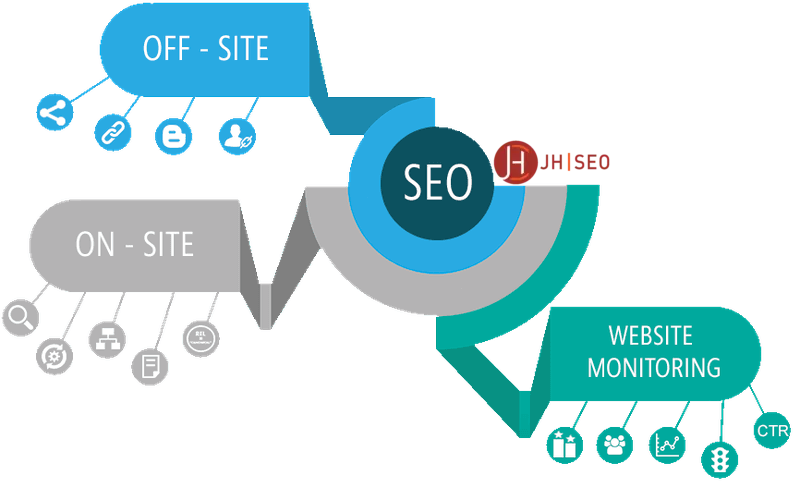International e-commerce offers businesses a powerful opportunity to expand globally. To succeed, companies must implement a strong international SEO strategy to ensure high rankings across different countries. Optimizing for international search engines is essential to boosting traffic, engagement, and sales.
With more consumers shopping online globally, adapting SEO to local markets is crucial. International SEO involves translating content and understanding local search behavior. By using strategies like hreflang tags and content localization, businesses can increase visibility, drive conversions, and fuel growth.
What is International SEO?
International SEO optimizes websites to rank higher in search results across multiple countries and regions. Unlike traditional SEO, which targets one geographic area, international SEO requires understanding cultural nuances, local preferences, and search behaviors to craft a strategy for diverse audiences.
The main difference between international and traditional SEO is the need for tailored strategies that align with local languages, search engines, and cultures. For example, optimizing for Google in the U.S. differs from optimizing for Baidu in China or Yandex in Russia, as each market has its own search patterns and algorithms.
Key Components of International SEO
To successfully execute an international SEO strategy, you must focus on several key components:
- Hreflang Tags: These HTML attributes are essential for indicating to search engines which language and regional variations of a page to show to users. By correctly implementing hreflang tags, you can avoid duplicate content issues and ensure the right version of your content appears in front of users from specific regions.
- Regional Targeting: Search engines use factors like domain structure (ccTLDs, subdomains, or subdirectories) and geographic settings to determine which market to serve your content to. By targeting specific countries or regions, you can tailor your site structure and content to match the preferences of local users.
- Language Preferences: Language is not just about translation; it’s about cultural adaptation. Users in different countries may use distinct search terms, and understanding local language preferences is key to driving relevant traffic. Optimizing for the correct language settings within international e-commerce SEO ensures that your content speaks directly to your audience’s needs.
By focusing on these components, you can create an effective international SEO plan that boosts your global visibility and attracts customers from a variety of regions.
How To Develop An Effective International SEO Strategy For E-commerce
Developing a robust international SEO strategy for e-commerce requires a comprehensive understanding of the global landscape and how to adapt your SEO tactics for different countries. The key to success lies in tailoring your approach to meet the specific demands and preferences of each target market while maintaining a cohesive global strategy. Below are the essential steps for creating an effective international SEO plan.
Conducting Market Research: Identifying Target Countries and Understanding Local Search Behavior
Before diving into international SEO, it’s crucial to conduct thorough market research. Identifying your target market involves understanding where your products or services are likely to succeed based on factors such as local demand, competition, and purchasing behavior. Here’s how you can get started:
- Identify High-Potential Markets: Look at countries where your e-commerce business has the potential for growth. Use data analytics tools like Google Trends, SEMrush, or Ahrefs to identify regions with high search volumes for your product.
- Understand Local Search Behavior: Users in different countries may search for products or services in unique ways, using different keywords or phrases. Conduct keyword research tailored to each market to identify relevant search terms in local languages and dialects.
- Cultural Insights: Beyond search behaviors, cultural preferences significantly influence purchasing decisions. Make sure to consider local holidays, payment preferences, and shopping habits when designing your international SEO strategy.
Competitor Analysis: Analyzing SEO Strategies in International Markets
To stand out in international markets, it’s essential to understand how your competitors are positioning themselves and succeeding. Conducting competitor analysis in each target market will give you insights into local SEO trends and tactics. Here’s what to focus on:
- Identify Local Competitors: Research the top e-commerce businesses in your target countries. What are they doing right in terms of SEO? Analyze their keywords, content strategies, backlink profiles, and user experience.
- Local SEO Ranking Factors: Understand the ranking factors that search engines prioritize in each country. For example, Google might emphasize content quality and backlinks in one market, while other search engines like Baidu or Yandex may have different algorithms or ranking criteria.
- Content and Cultural Differences: Analyze how your competitors are adapting content to local languages and cultural nuances. This can provide valuable insight into whether localization efforts are paying off.
Choosing the Right Domains and URL Structure: Country Code Top-Level Domains (ccTLDs) vs. Subdirectories vs. Subdomains
When optimizing for international e-commerce SEO, one of the most critical decisions you’ll face is selecting the right domain structure. The choice between using country code top-level domains (ccTLDs), subdirectories, or subdomains will impact your SEO efforts and ability to target users in specific regions.
- ccTLDs (Country Code Top-Level Domains): Using ccTLDs, such as .fr for France or .de for Germany, signals to both users and search engines that the content is specifically for that region. This method provides strong localization signals but requires separate SEO efforts for each country-specific domain.
- Subdirectories: A simpler approach is to use subdirectories (e.g., example.com/fr/ for France or example.com/de/ for Germany). This option helps you consolidate domain authority and makes it easier to manage from a single website, but it still allows you to target specific countries with localized content.
- Subdomains: Another option is to use subdomains. While this method provides a clean separation between regions, it’s often treated as a separate entity by search engines, requiring more work to build authority and ranking.
Choosing the right structure depends on your business goals, resources, and the complexity of your international SEO strategy. Each option has pros and cons, so it’s important to align the decision with your international e-commerce SEO needs.
Focusing on market research, competitor analysis, and domain structure helps create a strong foundation for your international SEO strategy, ensuring global market success.
Why are Local Search Engines Important for International SEO?
Many businesses focus only on Google when developing an international SEO strategy, but regional search engines are equally important. Optimizing for local search engines boosts visibility in specific markets, helping capture a larger audience and expand your global reach.
Focus on Non-Google Search Engines: Exploring Baidu (China), Yandex (Russia), and Others
While Google is the dominant search engine in many countries, several other search engines are widely used in specific regions. For instance, in countries like China and Russia, search engines like Baidu and Yandex are the primary platforms for finding information online. Here’s why focusing on these local search engines matters:
- Baidu (China): As China’s leading search engine, Baidu holds a market share of over 70%. Google is blocked in China, so any international SEO strategy targeting this market must be optimized for Baidu. Baidu’s algorithms prioritize local language content, fast-loading websites, and regional backlinks. Businesses targeting China need to understand how Baidu indexes and ranks content to succeed in this unique market.
- Yandex (Russia): In Russia, Yandex is the preferred search engine, accounting for around 60% of the search market. Yandex uses different ranking factors compared to Google, such as regional relevance and the importance of local backlinks. Optimizing your content for Yandex can help e-commerce businesses stand out in Russia and surrounding regions.
- Other Regional Search Engines: Many countries have their own dominant search engines, such as Naver in South Korea or Seznam in the Czech Republic. Optimizing for these engines can be critical if you’re targeting consumers in those countries.
Optimizing for Regional Search Engines: Understanding Different Algorithms and Ranking Factors
Each search engine has its own set of algorithms and ranking factors, which can vary significantly from Google’s. Understanding these differences is crucial for any international SEO strategy. To effectively optimize for regional search engines, consider the following:
- Regional Relevance: Local search engines place a high emphasis on content that is relevant to specific regions. This means you should focus on creating content that resonates with the cultural and language preferences of your target market. Using hreflang tags to signal the correct language and regional variations is essential for search engines like Baidu and Yandex.
- Backlink Profiles: Building backlinks from locally relevant sites is an essential SEO tactic for ranking well in regional search engines. Regional search engines tend to prioritize backlinks from websites that are popular and trusted within their specific geographic area. Ensure that your international e-commerce SEO efforts include outreach and partnerships with local influencers, websites, and blogs to gain authoritative backlinks.
- Localization and Hosting: Local search engines prefer websites that are hosted within the target country, as this indicates faster load times and relevance. If possible, hosting your website or using a content delivery network (CDN) in the country you’re targeting can improve your rankings on regional search engines.
- Language and Content Optimization: Understanding local dialects, slang, and regional variations in language can help you create content that resonates better with users. For example, international SEO for the French market should account for different terms used in France versus Canada. Using hreflang tags properly ensures that search engines show the correct version of your website to the right audience.
By focusing on local search engines and understanding their unique ranking factors, you can improve your chances of ranking well in different countries, driving more traffic to your website and increasing your global reach. An effective international SEO strategy requires attention to both global search engines like Google and local search engines that dominate specific regions.
Key SEO Strategies For E-commerce Websites In Multiple Countries
When expanding internationally, adopting an international SEO strategy tailored to local markets is crucial. This approach boosts visibility, attracts relevant traffic, and drives conversions. The following key strategies are essential for success in global markets.
Language and Content Localization: Importance of Translating Content and Adapting It Culturally
Language and content localization is crucial in international SEO. Simply translating content isn’t enough; it must be culturally adapted to resonate with the target market. Direct translations can miss important nuances, potentially confusing or alienating customers. Here’s why localization matters:
- Beyond Translation: Localization involves adapting your website’s content to reflect the cultural norms, values, and preferences of a specific region. This includes adjusting product descriptions, payment options, and even images to align with local expectations.
- Cultural Sensitivity: Different countries may have varying preferences or taboos, so a culturally sensitive approach to content is crucial. For example, colors or symbols that have positive connotations in one country might have negative meanings in another.
- SEO Considerations: Localization also affects SEO. For example, keywords that perform well in one language may not be effective in another. Therefore, translating and adapting content for both language and SEO factors is critical for international e-commerce SEO.
International Keyword Research: Finding Keywords That Resonate in Specific Countries
Effective international SEO relies on understanding how people search in different languages and regions. Conducting thorough international keyword research helps you identify keywords that resonate with users in specific countries, allowing you to target local search trends effectively. Key aspects to consider in international keyword research include:
- Regional Variations in Search Terms: Words that are commonly used in one country may differ in another. For instance, in the United States, people may search for “sneakers,” while in the UK, they may use the term “trainers.” Identifying these differences ensures that you’re targeting the correct terms for each market.
- Using Local Keyword Tools: Utilize local keyword research tools for each target market to gain insights into search behavior and trends. Tools like Baidu Keyword Planner for China or Yandex Wordstat for Russia can help you tailor your SEO strategy to local preferences.
- Competitor Keyword Analysis: Analyzing the keywords your competitors are ranking for in international markets provides insight into effective terms for your target audience. You can adjust your approach based on their success or gaps in their strategy.
Building Local Backlinks: Why Local Links Are Essential for Ranking in Foreign Markets
Building local backlinks is another critical strategy for improving your rankings in international search engines. Search engines like Google, Baidu, and Yandex value backlinks from region-specific, authoritative websites because they signal local relevance. Here’s why local links matter:
- Relevance to Local Audiences: Backlinks from websites within a specific country signal to search engines that your content is valuable and trusted by local users. This helps boost your website’s authority and visibility in the target market.
- Trust and Authority: Local websites are more likely to attract local traffic and users who trust their content. By obtaining backlinks from these websites, you align your e-commerce brand with trusted local sources, improving your credibility in the eyes of both users and search engines.
- Building Relationships with Local Influencers: Collaborating with local bloggers, influencers, and industry leaders in your target market can help you secure valuable backlinks and increase your brand’s visibility. Outreach and content partnerships are effective ways to build these local connections.
- Local Directories and Listings: Ensure your e-commerce website is listed on local business directories or platforms relevant to each target market. These listings not only provide backlinks but also help users find your business when they search for similar products or services.
Incorporating local backlinks into your international SEO strategy will strengthen your online presence and improve your website’s rankings in foreign markets. This practice, combined with language localization and international keyword research, helps create a comprehensive and effective international e-commerce SEO approach.
How To Optimize Your E-commerce Website For International Traffic
As an e-commerce business expands globally, optimizing for international traffic is crucial for reaching and converting users. A strong international SEO strategy ensures your website is accessible, user-friendly, and fast across regions. Here are key factors for optimization.
Mobile Optimization: Tailoring the Mobile Experience for International Users
With mobile usage on the rise globally, ensuring that your e-commerce website is mobile-friendly is essential for attracting international traffic. Different countries have varying mobile usage trends, and a website that provides a seamless mobile experience will engage more users. Here’s how to optimize for mobile:
- Responsive Design: A mobile-responsive design ensures that your website adapts to any screen size, whether it’s a smartphone or tablet. This is crucial for providing a smooth user experience, especially in regions where mobile commerce is dominant.
- Regional Mobile Usage: Understand the mobile behavior in your target market. For example, mobile commerce is huge in countries like China and India, so optimizing for mobile is especially important in these regions. Test your website across different devices and operating systems to ensure it works well in all markets.
- Mobile-First Indexing: Search engines like Google prioritize mobile versions of websites in their rankings, so ensure your site’s mobile version is as optimized as the desktop version. Mobile optimization is an essential part of an international SEO strategy to rank higher in search engine results and attract more international users.
Website Speed and Performance: Importance of Fast Load Times for International Visitors
Fast website performance is crucial for international SEO and ensuring that international visitors have a positive experience. Slow-loading websites can lead to higher bounce rates and lower rankings in search engines. Here’s how to ensure your website performs optimally for users around the world:
- Content Delivery Network (CDN): Use a CDN to serve your website’s content from servers closer to the user’s location. This minimizes load times for international visitors and helps deliver a faster browsing experience, which is critical for improving your site’s SEO rankings.
- Optimizing Images and Resources: Compress images, videos, and other resources to reduce their load times. Make sure the content is tailored to the regions you’re targeting, which helps both speed and SEO.
- Local Hosting or Regional Servers: Consider hosting your website in a location closer to your target market or using regional servers to improve website speed and reduce latency. This is particularly important for countries where the internet infrastructure is not as fast or reliable.
- Website Testing Tools: Use tools like Google PageSpeed Insights or GTMetrix to test your website’s speed across different countries and devices. These tools can help you identify areas for improvement in load times, especially for international e-commerce SEO.
User Experience Considerations: Customizing Navigation and Checkout Processes for Local Preferences
User experience (UX) is crucial for converting international visitors into customers. Understanding local preferences helps create a seamless experience that encourages browsing, shopping, and checkout. Here are key UX considerations for international SEO:
- Localized Navigation: Align website categories, descriptions, and design with cultural norms in different countries.
- Language and Currency: Use hreflang tags for correct language targeting and offer local currencies for seamless transactions.
- Payment Methods: Support popular regional payment options like Alipay, iDEAL, or Paytm to ease international checkout.
- Shipping Clarity: Clearly communicate shipping costs, options, and return policies customized for each target market.
- Mobile-First Checkout: Ensure forms and calls-to-action are mobile-friendly to cater to the growing number of mobile shoppers.
By focusing on mobile optimization, fast website performance, and tailored user experience for international SEO, you can create a seamless and engaging environment for international visitors. This will not only improve your site’s rankings on search engines but also help build trust with users, ultimately driving more traffic and sales to your international e-commerce SEO efforts.
How Search Engines Handle International SEO: Understanding the Algorithms
When optimizing for international SEO, it’s important to understand how different search engines like Google, Baidu, and Yandex handle content. Each has its own algorithms and ranking factors, so tailoring your SEO strategy ensures better rankings in multiple markets.
Google’s Approach to International SEO: Using Hreflang, Regional Targeting, and Language Settings
Google plays a key role in international SEO with specific algorithms and tools to serve the right version of your website based on user location and language preferences. Key components of Google’s approach include:
- Hreflang Tags: Hreflang tags tell Google which version of your content to show users in different regions and languages, avoiding duplicate content and ensuring accurate targeting.
- Regional Targeting: Using Google Search Console, you can set geographic targets, like ranking higher for UK users, even if your domain is a .com or .net.
- Language Settings: Google uses language settings to show the correct version of your site, improving relevance and rankings by tailoring content to users’ native languages.
- Content Relevance: Google ranks content based on local relevance, so localizing your content to meet regional needs helps improve search rankings.
Non-Google Search Engines: How Different Search Engines Treat International Content
While Google dominates globally, many countries have preferred search engines with unique algorithms, requiring tailored approaches for international SEO. Here’s how key non-Google search engines handle international content:
- Baidu (China): Baidu prioritizes local content, fast-loading websites, and regionally hosted pages over backlinks and hreflang tags. Localization in Chinese and meeting Baidu’s specific needs are crucial.
- Yandex (Russia): Yandex emphasizes local relevance, Russian-language content, and regional hosting. Backlinks from local sources play a significant role in SEO for Russian-speaking countries.
- Naver (South Korea): Naver values culturally relevant content, local backlinks, and regionally hosted sites. Tailoring content to South Korean users boosts rankings.
- Seznam (Czech Republic): Seznam prioritizes Czech-language content, local backlinks, and regional keywords. Appealing to Czech users is key to ranking well.
Adapting strategies to the dominant search engine in your target market improves rankings, visibility, and overall success in international markets.
International SEO Mistakes To Avoid
When developing an international SEO strategy, it’s easy to make mistakes that can negatively impact your rankings and visibility across different countries. A poorly executed international SEO approach can prevent your website from reaching its full potential in international markets, which could lead to missed opportunities for growth. To avoid common pitfalls, here are some mistakes to watch out for:
Ignoring Regional Preferences: Why Generic Content and Keywords Can Harm Your Rankings
A major mistake in international SEO is using generic content and keywords that ignore regional preferences. Target markets in different countries have unique search habits, and failing to cater to these can hurt engagement and rankings.
- Language and Terminology Differences: Terms vary by region; for instance, “sneakers” is common in the U.S., while “trainers” is preferred in the U.K. Without proper keyword research, your site may miss key searches.
- Cultural Relevance: Content effective in one country may be inappropriate or irrelevant in another, leading to higher bounce rates and lower rankings. Localizing content to fit cultural values builds trust.
- Local Trends: Regional search trends often differ from global ones. Researching specific markets ensures your content aligns with local user interests and needs.
Failing to Use hreflang Tags Correctly: Common Errors with International Targeting
Hreflang tags are essential for guiding search engines to show the correct language and regional page to users. However, improper implementation can cause issues. Common mistakes include:
- Incorrect Tagging: Using the wrong language or region codes, like hreflang=”es” instead of hreflang=”es-MX” for Mexico, can lead to improper targeting.
- Missing Hreflang Tags: Failing to include hreflang tags on all localized pages can cause duplicate content issues and prevent search engines from displaying the correct version.
- Incorrect Self-Referencing Tags: Each page needs a self-referencing hreflang tag to confirm it as the correct version for its language or region. Missing these tags can confuse search engines and affect rankings.
Overlooking Mobile-Friendly Design: Ensuring a Seamless Experience for International Shoppers
In the age of mobile commerce, overlooking mobile optimization can severely damage your international SEO strategy. Mobile-friendly design is essential to ensure that international shoppers can easily browse and purchase from your website, regardless of location or device. Here’s why mobile optimization is critical for international e-commerce SEO:
- Mobile Usage in Different Countries: In regions like Southeast Asia and Africa, mobile devices dominate internet access. Without optimization, you risk alienating key target markets.
- Google’s Mobile-First Indexing: Google ranks websites based on their mobile versions first. Poor mobile optimization can hurt your rankings and visibility in search engines.
- Seamless Shopping Experience: A fast, user-friendly mobile site boosts conversions and enhances international e-commerce SEO.
- Regional Mobile Preferences: Test your site on popular devices in each country to ensure compatibility across platforms.
Addressing mobile optimization, regional preferences, and hreflang tags ensures better rankings, engagement, and conversions globally.
Tracking And Measuring Success: How To Monitor International SEO Performance
To ensure that your international SEO strategy is effective, it’s important to track and measure your SEO performance regularly. Monitoring the success of your international SEO efforts allows you to refine your approach and improve your visibility across different countries. By analyzing key metrics, you can gain insights into what’s working and what needs adjustment. Here’s how to track and measure the success of your international SEO initiatives.
Using Analytics for International SEO: Key Metrics to Track and Analyze
Analytics tools such as Google Analytics and other SEO platforms offer valuable insights into how your website is performing in international markets. These tools help you monitor traffic, user behavior, and other metrics that are essential for refining your SEO strategy. Here are the key metrics to track:
- Organic Traffic by Country: Monitor traffic from different countries to identify successful markets and areas needing improvement in international e-commerce SEO.
- Keyword Rankings by Region: Use tools to track keyword performance in target markets, highlighting where optimization efforts are working or needed.
- Bounce Rate and Engagement: High bounce rates from certain regions suggest content isn’t resonating. Track session duration and page views to refine your strategy.
- Conversion Rates: Measure customer actions like purchases or sign-ups by country to assess the effectiveness of your SEO strategy.
- Click-Through Rate (CTR): Evaluate if metadata like titles and descriptions appeal to specific target markets, adjusting to match local search intent.
Adjusting Your Strategy Based on Data: Refining Your Approach Using Insights from Different Regions
Once you’ve gathered data, it’s important to analyze the results and adjust your SEO strategy based on the insights from different countries. By leveraging the data from analytics tools, you can refine your international SEO efforts and improve your rankings across various international markets. Here’s how to make adjustments based on your data:
- Refine Keywords: Update underperforming keywords with locally relevant or less competitive terms tailored to your target market.
- Improve Localization: Enhance content for regions with low engagement by aligning it with local culture, language, and trends.
- Optimize Mobile: Address low mobile conversion rates by improving load times, navigation, and payment processes for international users.
- Fix Hreflang Tags: Correct issues if analytics show the wrong content is displayed to specific regions, ensuring proper regional targeting.
- Test Regional Strategies: Use A/B tests to identify what content or SEO adjustments work best for underperforming markets.
Tracking and adjusting your international SEO performance is an ongoing process. Regularly analyzing the data from search engines and other tools gives you valuable insights into how your website is performing across different countries. By refining your SEO strategy based on these insights, you can improve your international e-commerce SEO, optimize for local preferences, and achieve higher rankings and conversions in global markets.
An effective international SEO strategy drives global growth. By localizing content, using hreflang tags, optimizing for mobile, and building local backlinks, businesses can improve rankings and engage their target market. Start by researching markets, adapting website structure, and using analytics to refine strategies for long-term success.



































































































































































































































